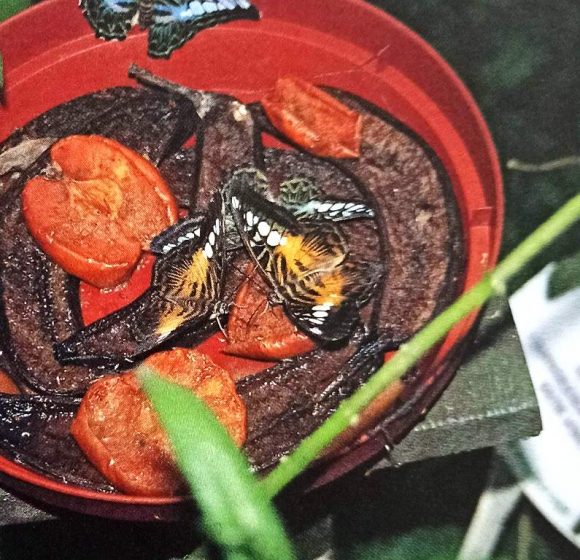How to Keep and Rear Butterflies? Butterflies can be easy to raise from egg to adult, or they can be next to impossible, depending on the species.
It also depends on how much time and money you are willing to expend. You may have to provide specific conditions to rear them successfully, For instance, if you live in a cold area, you may have to find a way to keep the temperature high enough for them to survive.
Keeping them healthy through their various stages of development can be very demanding. Most species require their cages to be kept scrupulously clean, as they can be very susceptible to bacterial, viral, or fungal infections. One of the great advantages of rearing butterflies yourself is that. It is almost certainly the easiest way to photograph them close up, particularly for species that are not local to your area.
It is also by far the best way to record the entire life cycle, especially different video clips. The vast majority of the world’s tropical species are known only by their adult form. Unfortunately, we have no idea what their larvae look like or feed on. Any work that improves our knowledge in this direction is invaluable to science. That is one of the main areas where amateurs can contribute new information.
One of the easiest ways to obtain livestock is to purchase it from a dealer or swap it with another enthusiast. If you need to send them through the post, it’s best done when they are still eggs. One of the problems, though, is that by the time they arrive, any attached foliage will have wilted. Hence, you must be careful that they are ventilated well enough to prevent any fungal growths.
Once the eggs have hatched, you will have to decide how to feed the new larvae. Once you have decided whether to use cuttings or potted plants, you will need a cage to put them in. You can either buy these or make them yourself quite easily if you do choose to build your own. Hence, it’s a good idea to have a look at a few before you start construction. This may save you difficulty later on. The most important thing to remember is that condensation must be avoided at all costs, as it will encourage the dreaded fungal problems.
It’s best, therefore, to use fine netting for the sides of the cage, as this will allow light and fresh air in, and hopefully keep parasites and predators out, You need to keep in mind how the species you are keeping will pupate. For instance, if they bury themselves in soft soil, you’ll need to give them some peat or leaf mold.
Don’t just dig up some soil, as it could be harboring all sorts of nasties—mites, parasitic worms, and so on. Either sterilize it yourself or buy some that are sterilized. A do-it-yourself method is to stick it in the oven for a while. Bear in mind that it might stick when it gets hot- this could result in some interesting flavors for subsequent meals!
It is vital to check through any cuttings carefully before you place them in any cages, as it is only too easy to introduce insects or spiders that will be very happy to eat your precious larvae before you are even aware of their existence. Sometimes, though, you can be pleasantly surprised. When I was a child, I once collected some fresh food plant for some beloved hawk moth larvae, only to find that I had unwittingly collected material that had more of the larvae already on it.
By far the best way to repel butterflies from eggs or caterpillars is to use potted plants instead of cuttings. This is the passionflower; a larval food plant of many butterfly species, including the Heliconids, such as the Zebra butterfly (Heliconius charitonius).
Another problem is that, when you throw out the old cuttings, you have to be careful not to throw out the larvae as well. As cuttings wilt, the leaves often curl up, resulting in nice, convenient hiding places for shy larvae. You will also have to take care when the larvae are preparing to molt, as they must not be disturbed, or they may die.
The best way to provide food to plants is to have them planted in pots: this way, the larvae cannot crawl into the water jars. Having your food plants – “potted up” may not be as simple as it sounds, as some species will strip a plant in no time, while others are cannibalistic, and so have to be kept apart. This means that you may need many plants ready, which can demand several months of planning, especially if the only way to obtain them is to grow them from seed.
Once you have raised your larvae, and they have gone through pupation and emerged successfully as adults, you will need to have nectar-providing plants for the butterflies to feed on. Good examples of that well in pots are the various species of buddleia, hebe, and sedums. The best way of all to choose what flowers to provide, though, is undoubtedly to observe the butterfly species in the wild and find out for yourself what they like to feed on.
Alternatively, you can feed them from solutions of honey or sugar and water, but it is very important that the strength of the solution is carefully controlled. If the concentration gets too high, the sugars may re-crystallize in the butterfly’s abdomen, giving it a slow and presumably painful death. The solution should be kept at around 5% honey.
You can use artificial flowers to lead the butterflies to the honey solution, by inserting them into the neck of the container, or you can manually encourage the butterflies to feed by uncoiling the proboscis with a pin and placing it on a pad of cotton wool soaked in a honey solution. If you have suitable flowering plants, it is probably easier to let the butterflies feed themselves, especially if you are new to rearing them!
If you decide to use sugar or honey solutions, bear in mind that these will act as attractants to wasps and ants, which will be a real threat to your butterflies. Another complication with rearing your own butterflies is that there are many other insects that will happily make a meal out of your prized “pets.”
The worst of these are the many parasitic flies and wasps, as most of them can detect and track down larvae, even when kept inside a house. Some of them are very small, so fine netting has to be used to keep them away. Spiders are also obviously likely to take any opportunity to get at your captives and feed off them.
If you are intending to breed the adults once they have emerged into nice, healthy butterflies, you may have further problems. Some species will mate at the earliest opportunity (especially some moths, where the males will travel for miles to reach a female). However, others require very particular light, temperature, and weather conditions, along with a lot of space.
Therefore, they can perform their highly complicated courtship flights. If you are lucky, you may be able to encourage them to pair by hand this is where you hold the male in one hand, and the female in the other, and by encouraging the male to open his claspers and lock onto the female’s abdomen, a pairing can sometimes be achieved.
It is also important that you keep the humidity level high, or else the butterflies will dehydrate and die. The easiest way to do this is to use a houseplant sprayer set to a fine mist. Use it several times a day to keep the air moist in the cages. You cannot use open trays of water, as the adults will drown in them, although you can use one if you cover it with netting. This will then slowly evaporate, helping maintain cage humidity. The story of butterfly evolution is incomplete; butterflies are inherently so delicate that their remains are very rarely preserved There’re therefore several gaps in our knowledge.










